With the increasing and varied hair demands in the market, manufacturers and suppliers have successfully diversified and adopted new hair lines to better cater themselves to different and ever-changing hair preferences of buyers in different parts of the market. As a result, Raw hair and Virgin hair have been introduced to the market, offering a wider range of hair types for choosing. However, such a diverse product catalogue might also pose a challenge, especially for beginner hair entrepreneurs – confusing and making the decision-making even more difficult for those unknowing of the differences between the two diverse hair lines.
Indeed, choosing between Raw hair vs Virgin hair has always been a difficult decision for many inexperienced hair businesses in the market. To support beginner hair entrepreneurs, as well as help educate hair buyers about the perks and drawbacks of the two hair line options, this article will go over all the necessary information, and decide which type of hair is better.
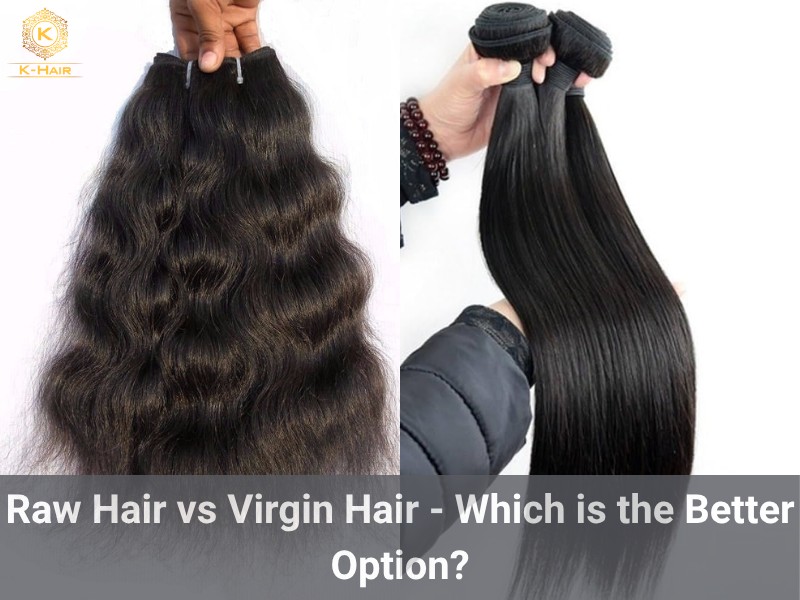
1. Getting to know the terms
Raw, Virgin, or other similar titles such as Remy, Non-remy, Synthetic hair are rarely named randomly, rather, they are a representation of the hair’s sourcing method and origin – how many donors the hair was collected from, if the hair has undergone any processes, or the material making up the hair strands,… Indeed, given the diverse and complex range of products in the current hair market, customers can still navigate their way through the field using these names – identifying their origins, and ultimately, their quality.
However, these names might be unreliable in some cases, as different hair vendors in different markets might have different standards and marketing strategies. As a result, you may actually catch numerous suppliers using hair titles differently, ultimately leading to even more confusions. For example, for some suppliers operating in the US, their Raw hair would most likely refer to Virgin hair, and their Virgin hair would most likely be Remy hair for suppliers in other hair markets. Hence, hair buyers worldwide should not be too reliant on these terms and titles in decision-making, rather, they should inquire thoroughly and make sure to grasp the actual features and origin of the hair before committing to purchase.
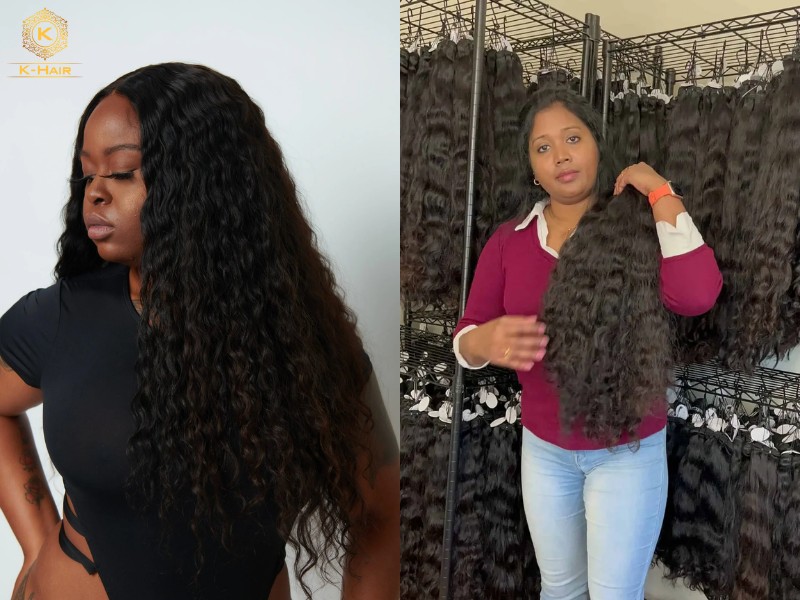
2. What is Raw Hair?
Among other hair lines in the market, Raw hair has successfully made a name for itself as being one of the highest hair qualities, most premium product line in the market – attracting a huge number of sales and gaining huge traction among the hair community. To look into its definition, as well as make a more well-grounded comparison between Raw hair vs Virgin hair, we must first go through its origin.
Raw hair – much like its name, must be completely unprocessed by any chemical involvement, prior, and throughout the sourcing and production process. Hence, to be considered Raw, the hair must be collected from young, healthy girls whose hair must not have been tampered by chemical-based treatment, and must be kept that way throughout the manufacturing. Therefore, the go-to source for this specific hair line is often mountainous, remote and developing regions – where global, modern hair trends such as bleaching, dyeing hair is still irrelevant. As a result, most of the female population residing here rarely get influenced by such trends, still manage to keep their hair completely untouched, making the perfect hair source for raw hair collection.
To optimize its functionality, Raw hair is often collected from one donor only – ensuring that all hair strands are cuticle aligned and uniformed to minimize tangling issues. Unlike Virgin hair, Raw hair never undergoes any extended processing, and would often be kept as it is after the collection. Indeed, the hair after being cut from its donor’s head, would be gathered and tied into bulks.
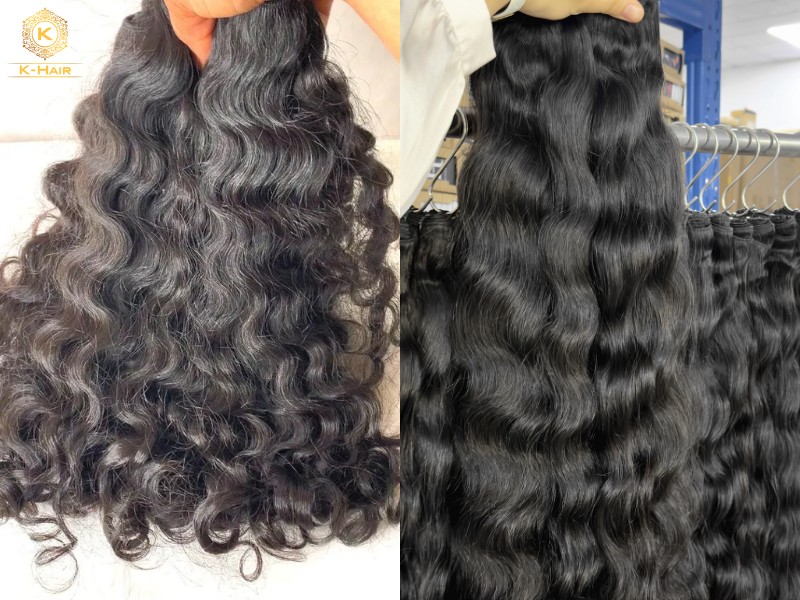
3. What is Virgin hair?
Another hot hair item in the global market is the Virgin hair – widely sought after for its softness, smooth and lustrous appeal. However, not to be mistaken with Raw hair, Virgin hair still possesses many desirable, unique origins and traits – features that help drive more customers toward Virgin hair and its products. Comparing Raw hair vs Virgin hair, one notable feature is that, unlike Raw hair, Virgin hair is texturized and treated to produce more diverse looks, rather than preserving its original look like with Raw hair.
Despite their differences, Raw hair and Virgin hair still share many features in common. Indeed, much like Raw hair, Virgin hair is also among the most premium hair lines, collected strictly from one young, healthy donor only. As a result, Virgin hair can still have its cuticle layer completely intact, and uniformed from strands to strands, also limiting the threat from tangling and shedding hair. Furthermore, such hair must also be collected from a reliable, chemical-free source to prove the best material needed for further hair production.
One significant difference between Raw hair vs Virgin hair is that Virgin hair is often slightly processed with herbal, natural-based treatment and solution to bring out its natural smoothness and hair luster, enabling it to deliver a much shinier, softer hair look than the unprocessed Raw hair. Furthermore, to further diversify its offerings, many Virgin hair manufacturers have been using steam-process, a type of non-damaging, chemical-free type of hair treatment, to straighten, curl, and texturize Virgin hair to produce more textures for their catalogue. Hence, in terms of diversity, Virgin hair is indeed a superior choice to the traditional Raw hair.
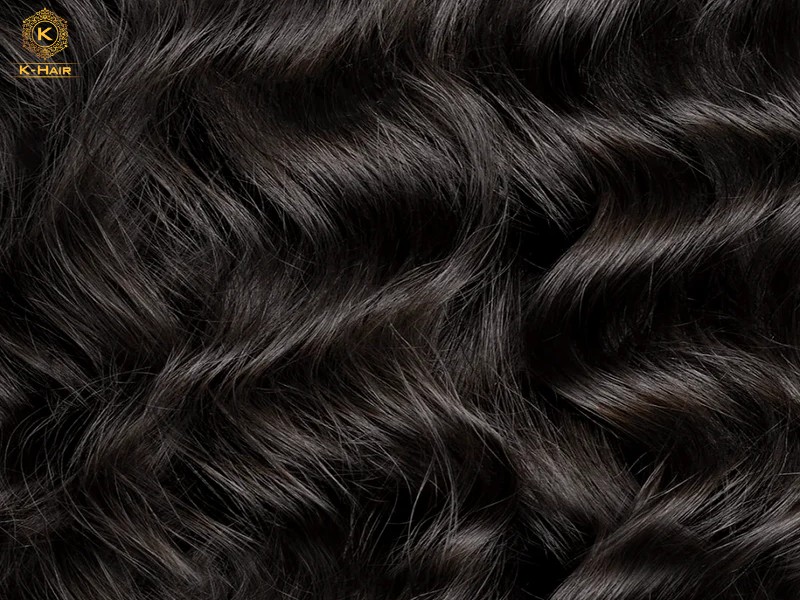
4. Differences between raw hair vs virgin hair
Comparing Raw hair vs Virgin hair, discussing their respective origin and processing methods is rarely enough to make it easier for hair buyers to distinguish between the two. Indeed, based on its origin and sourcing method, many other features can also be rooted from, leading to many sharp contrasting features between Raw hair and Virgin hair.
As experts in the field, we have been able to gather the necessary information, as well as the differences seen in Raw hair and Virgin hair, to make it easier for hair buyers to navigate through the complex hair market:
| Raw hair | Virgin hair | |
| Durability | As for being completely untouched and unprocessed → Raw hair is much longer-lasting than Virgin hair: Is able to keep its natural, original healthy state – lasting up to 5 years or more under proper care.→ A suitable long-term hair investment. | Slightly processed, but Virgin hair can still maintain a long-lasting hair use for its users:
|
| Versatility | Raw hair can offer the most versatility for its users:
|
Unlike many might assume, Virgin hair can also allow flexible styling options:
|
| Maintenance | In terms of maintenance, Raw hair can be slightly harder to maintain:
● Much like our own hair, Raw hair can be subjected to friction, humidity and other external factors, making it more prone to tangling and shedding. ● Often requires more frequent conditioning, washing and detangling to keep its original pristine hair health |
One strength that Virgin hair has over their Raw counterpart is that it is much easier to care for:
|
| Hair appearance | Look much like our own hair – Raw hair can offer the most natural hair look in the market:
|
Embrace and elevate the natural appeal of human hair, with an improved luster and texture look:
→ Is the improved version of the Raw hair, offering more sense of elegance and luxury into the hair look. |
| Price | In terms of pricing, Raw hair is often placed at a higher pricing range in the market, mainly due to its premium, unprocessed hair quality.
Furthermore, given the rising market demands for high-quality, authentic hair lines, the price for Raw hair continues to increase over the years. For example, in the market for a 20” raw hair bulk, the price would be near $65 to $80/100gr |
In the market, Virgin hair often positions itself as one of the higher end hair types, however, compared to Raw hair, it is still a much more affordable option.
Indeed, since Virgin can offer less flexibility in styling and longevity, its price tends to be much lower than Raw hair. For example, in the market, for a standard 20” Virgin hair extensions, the price would be from $44-55/100gr. |
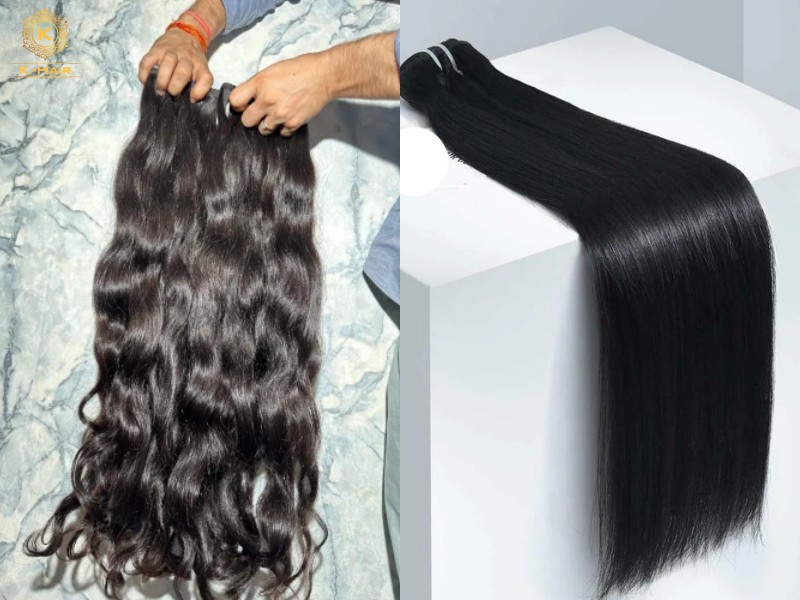
5. Raw hair vs Virgin hair: Which is better?
Over the years, the debate between Raw hair vs Virgin hair has been one of the most long-standing, unresolved discussions in the global hair market. Indeed, given the hair types’ distinct features, their pros and cons, it is extremely difficult for any hair lover to actually decide on which is superior to which, or determine which one is the better option in terms of overall quality. However, when we break down its individual features such as pricing, durability, and versatility, we can acknowledge that, Raw hair vs Virgin hair, each tends to come with its own characteristics and signature benefits, that makes it extremely hard to decide on the better option among the two. In fact, with such distinct features, Raw and Virgin hair is best suited for a specific range of customers in the market:
5.1. Who is Raw hair for?
Raw hair, as premium as it is, is often the most suitable hair type for luxurious hair brands or hair manufacturers, looking for a hair product to further elevate their exclusive brand image, or to provide raw material needed for high-quality, extensive hair production.
In today’s world, with the influence of social media and hair companies, women across the globe are paying more attention to their hair appearance, purposely looking for natural-looking hair solutions that can help them to achieve their desired look. On top of that, with the widened hair availability made possible by e-commercial platforms, hair buyers are becoming more and more picky, with higher demands and standards for their hair items, leading to a surge for high-quality, natural hair extension and related products in the market.
- Given such conditions, Raw hair soon became one of the most popular hair lines in the market, targeting the market’s rising demands for premium quality hair solutions.
- Additionally, due to its higher pricing range, Raw hair often cater mostly to big-budget hair buyers, or high-end hair brands sourcing hair with the purpose to further elevate their brand to a higher end of the market, or to preserve their exclusive brand image and target a specific end-user range.
- Furthermore, thanks to its unprocessed nature, Raw hair is also extremely suitable to utilize as a raw material needed for further hair production. Indeed, as it is completely free from any trace of chemical and is offered in its original, natural textures, hair buyers can purchase this specific hair type to customize, texturize or style the hair to their own liking. Hence, for wig, lace makers, looking for a premium source of material for their crafts, Raw hair poses as the perfect candidate.
However, most Raw hair products in the market are only available in simple, natural textures, such as straight, wavy, curly,… as the hair is completely unprocessed and kept at its original texture as found in its donor. Hence, for hair buyers wanting a more diverse, trendy hair look in their product, buying Raw hair might be a non-ideal solution. Furthermore, given that many hair buyers in the market tend to have limited capital and resources, not anyone can afford the premium pricing range offered with Raw hair, hence, making the hair type less accessible and available for buyers across the globe.
Indeed, in the global market, the regions where Raw hair is most popular tend to be distributed in countries with higher living standards and spending power, such as the US, or European countries. On top of that, these regions also tend to be influenced by celebrity culture, individualism and Western beauty standards, hence, more prone to hair options that can offer both more freedom in styling and natural, elegant look – features that Raw hair can satisfy.
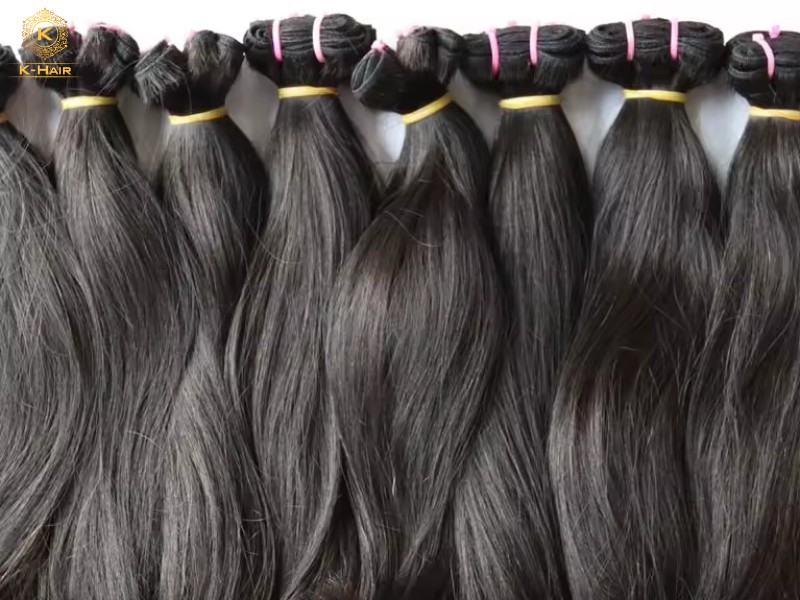
5.2. Who is Virgin hair for?
Much like Raw hair, Virgin hair is also best catered to its own specific customer base – hair buyers looking for lustrous, shiny, high-quality hair options, with a much more accessible pricing range compared to Raw hair.
Besides the on-going campaigns promoting natural hair looks, done by numerous hair companies that led to the prominence of Raw hair in the market, there still exists an emerging hair trend promoted by celebrities such as Saweetie, Megan Thee Stallion, and Carbi B,… focusing on the lustrous, glamorous hair look, rather than the traditional natural appeal.
- Being influenced by such trends and celebrity influence, more and more women are purchasing hair products or cosmetic hair extensions that can help them to achieve the similar glamorous look as their favourite public figures, leading to a rising number made in Virgin hair’s global sales volume.
- Thanks to their lower pricing, Virgin hair can make even where Raw hair comes short. With its affordability, Virgin hair is much more accessible than Raw hair – offering elegant, lustrous hair solutions for those unable to afford the premium pricing of Raw hair, making hair extensions and related products more available for women across the globe.
- On top of that, Virgin hair can offer much more diversity compared to Raw hair. Being slightly processed and texturized, Virgin hair can come in different textures such as Burmese curly, Kinky straight, Body waves,… delivering both classic, timeless hair textures and trendy, fashion-forward ones for its buyers. Hence, such diversity is extremely suitable for market-driven, customer-centered and trendy hair brands, looking for hair lines that can help them to stay ahead of the curb – better satisfying the ever-changing and varied hair needs in the market.
Being slightly processed and texturized, Virgin hair often meet with many reservations in the market, especially from customers prioritizing natural, pristine state for their hair products. Hence, in the market, there are still many customers hesitant and wary of Virgin hair and its products, despite numerous benefits and favourable traits it brings. Furthermore, for customers wanting a long-lasting, flexible hair line to customize, Virgin hair might not be an ideal option, given its shorter lifespan and slightly limited versatility compared to Raw hair.
In the global hair market, Virgin hair has managed to secure for itself a stable, considerable market volume, surpassing Raw hair in terms of profit in some cases. In fact, given its features and characteristics, Virgin hair is best suited for the African, South American and some European countries – market sectors highly focusing on trendy, diverse hair textures rather than the traditional appeal of raw hair.
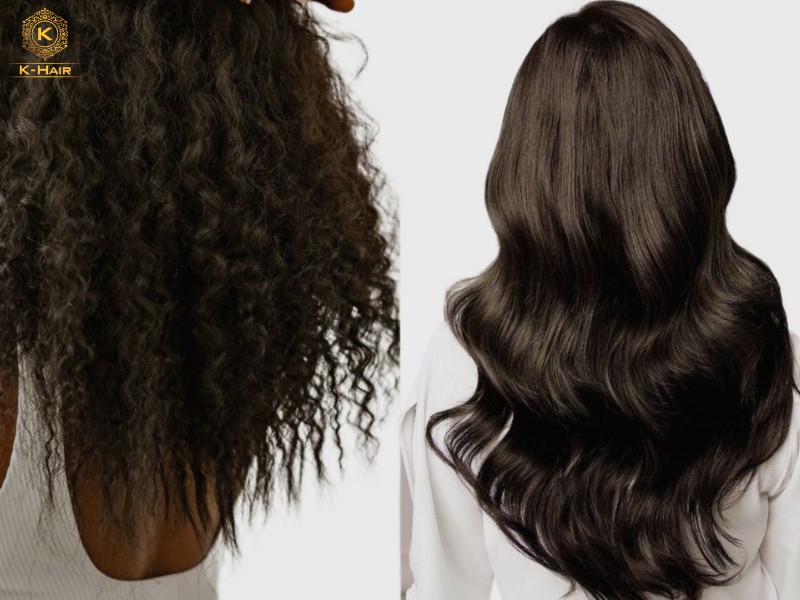
6. K-Hair: #1 Vietnamese hair factory
As one of the most reputable hair manufacturers in the industry, K-Hair has long been the go-to choice for clients seeking high-quality Raw hair vs Virgin hair, especially among international buyers who prioritize authenticity, purity, and long-term durability. With decades of experience, professional service, and a proven record of delivering consistently premium products, K-Hair continues to stand out as a trusted partner for a vast majority of hair buyers worldwide:
- Premium quality: K-Hair exclusively sources 100% Vietnamese human hair from young women in the northern regions of Vietnam, with the abundance of the healthiest, strongest, and most naturally silky hair. For both Raw and Virgin hair, every strand is collected directly from a single donor and kept in its purest form, completely free from chemical processing. Thanks to this meticulous handling, K-Hair’s Raw hair vs Virgin hair remain incredibly soft, naturally shiny, and highly durable, capable of lasting for years with proper care.
- Competitive pricing: Despite its position as one of Vietnam’s leading manufacturers, K-Hair continues to maintain remarkably competitive, factory-direct prices for its Raw and Virgin hair collections. By sourcing and producing everything directly, the company eliminates unnecessary middlemen and keeps costs transparent, ensuring buyers receive top-tier hair at wholesale-friendly rates.
- Customization options: Understanding the expanding needs of today’s hair market, K-Hair also provides tailored services for buyers working with Raw hair vs Virgin hair. Although these hair types are traditionally valued for their natural purity, clients can still request specific lengths, bundle weights, color requests (for Virgin hair), and packaging preferences to better align with their target market. For wholesalers, K-Hair additionally offers private labeling and customized branding solutions, allowing them to present their products more professionally and strengthen their brand identity.
- Dedicated customer support: Beyond the product itself, K-Hair is also widely recognized for its attentive customer care and transparent business policies. Their highly trained sales team remains available daily through WhatsApp and Instagram, offering real-time consultation, video calls, and live hair inspections to ensure that clients receive exactly what they expect. Even after the order is completed, K-Hair continues to provide packaging videos, shipping updates, tracking support, and responsive after-sales assistance, ensuring a smooth, secure, and trustworthy buying experience from start to finish.
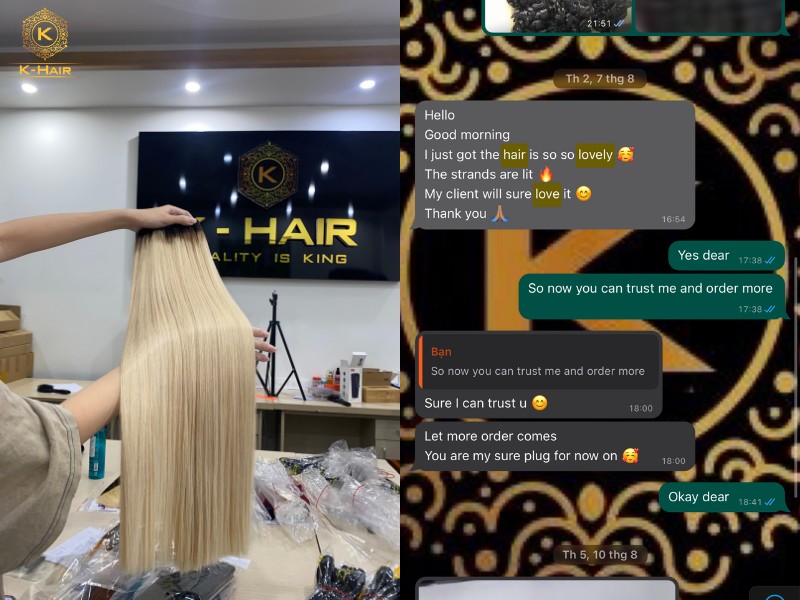
Contact For More Information:
- Website: https://khairvn.com/
- Address: 10A, 171 Nguyen Ngoc Vu, Yen Hoa, Hanoi, Vietnam
- Phone: +8492 633 2545 (WhatsApp)
- Email: [email protected]
- Facebook: https://www.facebook.com/KHairFactoryVN/
- Youtube: https://www.youtube.com/c/KHAIRFACTORYBESTVIETNAMHAIR
- Whatsapp: +8492 633 2545
>>Wanna check out K-Hair’s factory but find the travelling distance inconvenient? Go for a virtual factory visit by watching this video below:
K-HAIR FACTORY LEGIT CHECK – with Ms. Rose
7. Conclusion
With the information provided in this article, we hope that we have managed to assist young, ambitious business women in the hair industry about the overall market, tips, and most importantly, the differences between Raw hair vs Virgin hair. Doing business requires long-term commitment and support from trustworthy business partners, we proudly present ourselves not only as a trusted hair supplier, but also a supportive friend who will always have your back in this competitive industry.
Need to chat with a hair specialist? Contact us through the following link:
- Website: https://khairvn.com/
- Address: 10A, 171 Nguyen Ngoc Vu, Yen Hoa, Hanoi, Vietnam
- Phone: +8492 633 2545 (WhatsApp)
- Email: [email protected]
- Facebook: https://www.facebook.com/KHairFactoryVN/
- Youtube: https://www.youtube.com/c/KHAIRFACTORYBESTVIETNAMHAIR
- Whatsapp: +8492 633 2545

